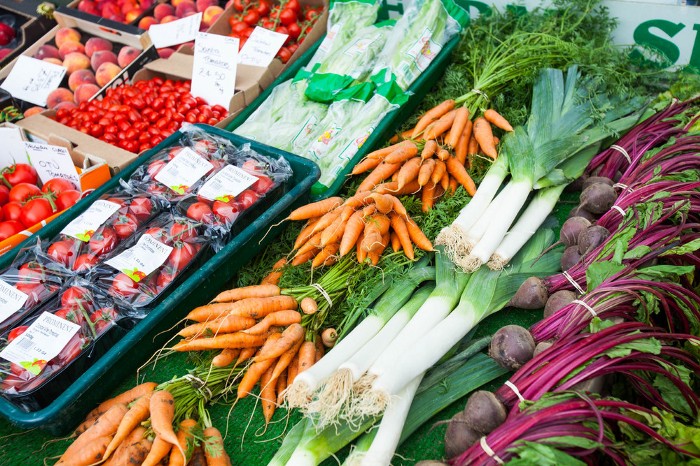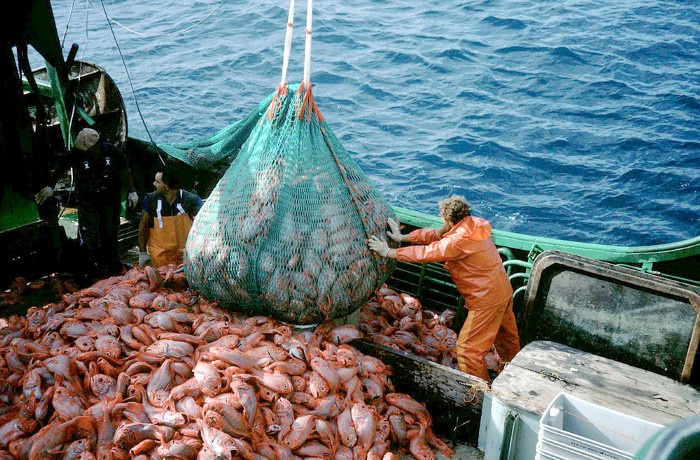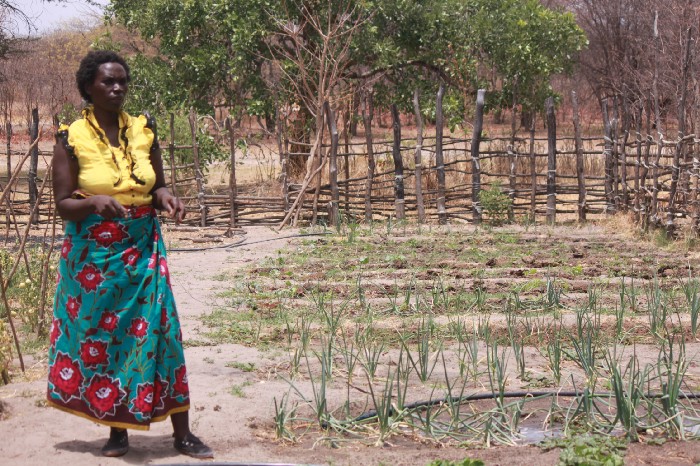

With the release of a landmark Global Assessment Report on the state of nature by the Intergovernmental Platform on Biodiversity and Ecosystem Services (IPBES) there is yet more proof that biodiversity is declining at an unprecedented rate, and that climate change and nature loss are pushing our planet to the brink. Like the FAO’s The State of the World’s Biodiversity for Food and Agriculture, the IPBES report highlights not just the loss of wild biodiversity but also agrobiodiversity (that associated with agriculture and food, such as crops, crop wild relatives, livestock breeds and functionally important wild biodiversity such as pollinators), and the potentially catastrophic results we face if we fail to transform the current system. The risks are not only for biodiversity, but also for our own food security.
The IPBES report highlights that by 2016, approximately 10 per cent of domesticated breeds of mammals were recorded as extinct (this includes the Beevbilde breed of cattle, the Norwegian Tautersheep breed, and the Lincolnshire curly coat pig) , as well as some 3.5 per cent of domesticated breeds of birds (such as the Yorkshire hornet breed of duck and the Huttegem chicken from Belgium). Fewer varieties of plants and animals are being cultivated, traded and maintained around the world, while thousands of invasive species, which are being actively spread as part of a homogenized food system, are disrupting ecosystems which they invade.
Neither many of the wild relatives of crops nor key hotspots of agrobiodiversity have sufficient protection. They represent critical reservoirs of genes and traits that may provide resilience against future climate change, pests and pathogens but they are being lost. This genetic variation is essential for maintaining long-term resilience of agricultural production, food systems and food security.
Declining agrobiodiversity is a threat to the food system, but illogically it is largely caused by our current production methods and consumption habits. Changes in land and sea use, market preference and large-scale trade all drive a narrowing of crop varieties and animal breeds.
The IPBES report notes that, although good environmental practices are increasing, intensive agriculture has led to declines in multiple ecosystem services, such as carbon sequestering, healthy water flows and habitat for nature. Approximately 25 per cent of the globe’s greenhouse gas emissions come from land clearing, crop production and fertilization, and fertilizers entering coastal ecosystems are creating hypoxic zones with a total area of more than 245,000 km2. We further degrade our oceans through coastal infrastructure development for aquaculture causing land/sea use change and direct over-exploitation of fish and shellfish, both of which have increased nearly everywhere over the past three decades.

© AFMA
Not only have we failed to tackle harmful practices which degrade our land and seas, powering the decline of our wild and agrobiodiversity, but we have actively encouraged it — mainly by not assessing the full environmental impacts of direct and indirect subsidies to fisheries, agriculture (including for fertilizers and pesticides) and the livestock industry are associated with inefficient production and waste, over consumption, and overexploitation of nature.
This report reinforces the need to act urgently and at scale, across both sectors and geographies, to implement solutions which measurably improve the health of both people and planet. The unique value of agrobiodiversity, beyond creating a more resilient food system, is its connection with wild biodiversity. As the IPBES report notes, the lands of indigenous peoples and local communities, including farmers, pastoralists and herders, are often important areas for in situ conservation of the remaining varieties and breeds.
Working alongside indigenous and smallholder farmers from Sintang in Indonesia to the Sertões region of the Cerrado in Brazil, from the Northern Great Plains of the US to Kazungula in Zambia, WWF manages many projects which take an integrated approach to landscapes and agriculture, rather than thinking solely of native vegetation systems. These approaches support local communities in stewarding their land, delivering valuable ecosystem services, while also being able to generate livelihoods and other socio-economic benefits.

© Peter McFeely / WWF Food
However, to protect agrobiodiversity, agroecological principles and practices need to be scaled up from smallholders to industrial-level production and cross-sectoral landscapes. To protect the diversity of genes, varieties, cultivars, breeds, landraces and species, we must look more closely at the differences between monoculture and complex agricultural landscapes, to identify the optimal balance between wild and agrobiodiversity to manage yield stability, incomes and so on. That said, evolving the measure of productivity of an agricultural landscape simply from yield (by volume or weight) to one of micronutrient density or nutrition security, both in the short and long-term based on potential degradation of the landscape, would radically alter the way in which land-use is considered. Whatever the measure, landscape planning to integrate agroecological practices will require many stakeholders working together and the evolution of financial and policy models as well as farming and production techniques.
Of course, altering what is produced will also require a modification in what we consume and concurrent work on the demand side must be done to raise consumers awareness on the importance of a varied and diverse diet, and incentivise businesses and chefs to incorporate a diversity of ingredients in their offerings. WWF is already taking steps forward in this space, through projects like the Future 50 Food report and beginning work on a study that evaluates the range of environmental and nutritional impacts of each key source of protein, from grass-fed beef to lentils, to make comparable judgements on the implications of our consumption patterns.
The Global Assessment Report is yet another clarion call for political, business, finance and community leaders to take action or risk the very future of our planet. Agrobiodiversity is just one issue to which attention is drawn in the report; it has clear importance to the food system and our food security, but it is also of symbolic importance. SDG 2.5, which in essence is to protect the diversity of plants, seeds and domesticated animals, expires at the end of 2020. As with the majority of the SDGs and Aichi targets, we are not on track to meet the goal. If we do not begin to halt and reverse the decline of biodiversity, we will struggle to meet the majority of them. In a decade, on the eve of the expiry of other targets in 2030, we must be celebrating the imminent achievement of goals, rather than lamenting another report on a lack of progress. The time to act is now, not tomorrow. Policymakers must ascribe to a New Deal for Nature and People and urgently develop a new global biodiversity framework for the decade 2021–2030 to stop nature loss, protecting agrobiodiversity and wild biodiversity.
For more information on the #GlobalAssesment report: lp.panda.org/ipbes
===============
By Joao Campari, Global Leader, Food, WWF International
Popular Post
Featured
Biodiversity
